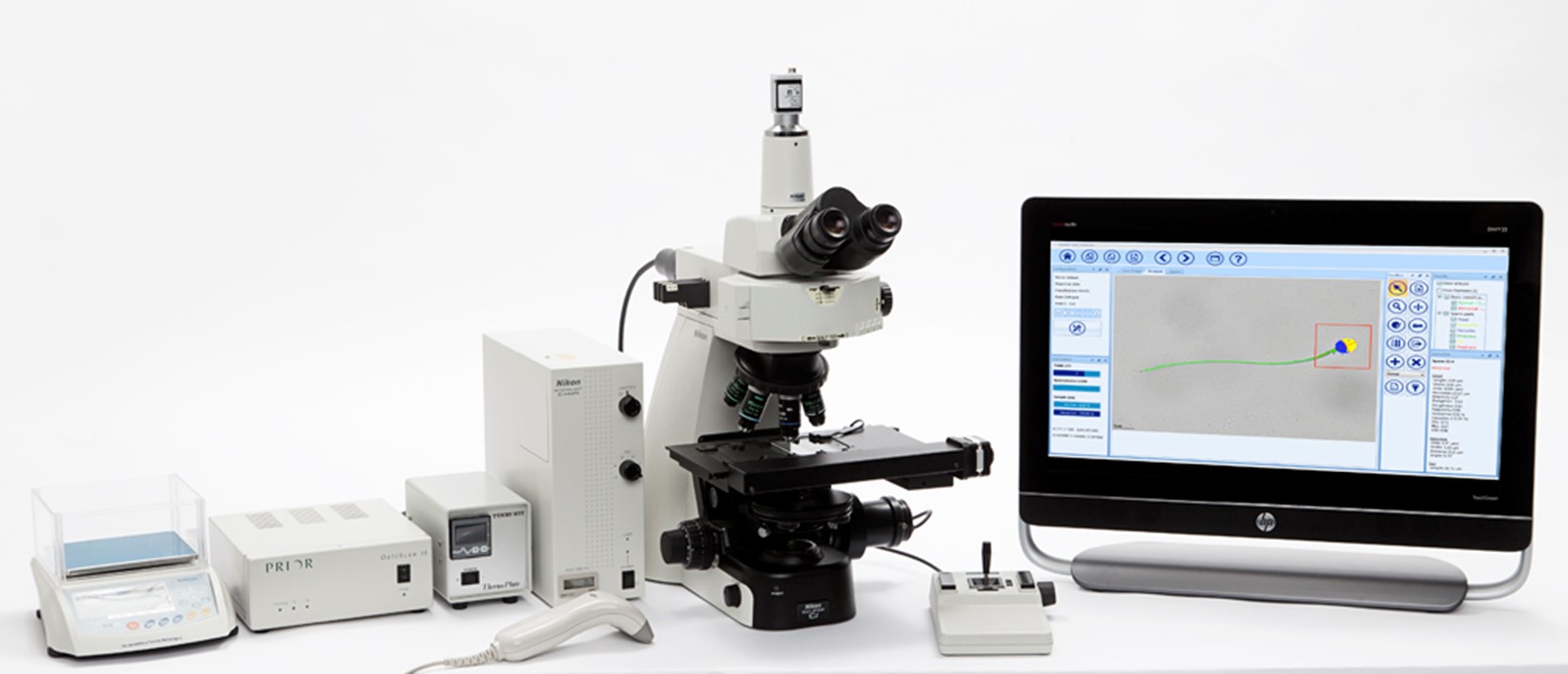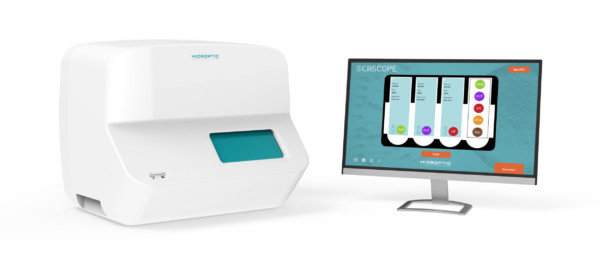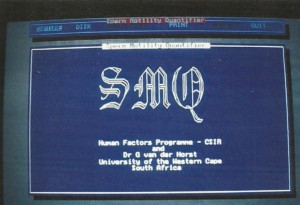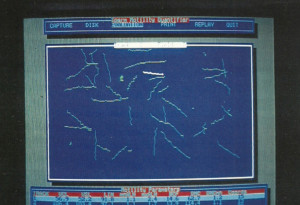Is CASA really required? Views from the past, the present and the future
The big questions are: Does CASA measure sperm parameters such as motility, morphology, vitality etc. quantitatively, accurately and to what extent does it enhance clinical spermatology for human and animals and wildlife? Does it provide answers not only on sperm quality but sperm functionality and fertilizing ability? To answer these crucial questions and its relevance, it is important to follow the historical development of CASA and just how difficult it was to get where we are today.
Early development in 1980’s and early 1990’s
Computer Aided Sperm Analysis (CASA) has been around for almost four decades. In 1985 CellSoft was the first major CASA system and only in the late 1980’s the first Hamilton Thorne system and CellTrack of Motion Analysis emerged. These systems for the first time provided at 30fps quantification of sperm motility and sperm concentration. While this presented major breakthroughs for quantifying sperm motility, they were largely black boxes with little true verification and scepticism. In 1992 The Sperm Motility Quantifier was developed in South Africa as a joint effort of the CSIR and the University of the Western Cape (Fig. 1). While it was a simpler system than the commercialized and well-established systems mentioned above, it provided verification of sperm tracks (replay) and was the first to operate at 50fps (Fig. 2). In general, all these CASA systems were not really trusted in the clinical setting despite many research papers providing new and useful information.
- Fig. 1: The Sperm Motility Quantifier developed in 1992 in South Africa. First system where only devoted computer cards required to be inserted in compatible computer and analysing at 50fps.
- Fig. 2: SMQ results screen showing swimming tracks and software allowed replay of any track every 50th of a second for verification (1992).
Subsequent development in the 1990’s
Many new CASA systems were developed in the 1990’s such as the Mika Strömberg, and the revolutionary Hobson Tracker, the first system to track motile sperm in real time and the Crismas system from Denmark. At this point in time sperm motility quantification was well established and some of the systems particularly in the field of human clinical spermatology could quantify the WHO progressive sperm categories. But there were many shortcomings related to sperm recognition using negative phase contrast microscopy. Accordingly, sperm concentration was greatly over estimated and the percentage sperm motility under estimated in semen samples, particularly for dirty samples, and these problems remained inherent in most CASA systems only to be partly resolved in the last two decades by some CASA systems and will be discussed later. However, valuable information was gained from diluted or swim-up semen samples used in IVF of both human and animals and accordingly many publications were produced. Another problem associated with CASA motility was that it was based on video frames associated with either NTSC or PAL systems (restrictive in frame rates) and rather poor resolution cameras that was very restrictive.
A next development of CASA was to automate sperm morphology analysis and that proved to be much more complex than initially anticipated. Most systems developed image analysis techniques that could recognize the acrosome, head and midpiece of stained smears. Hamilton Thorn was the first to put both the hardware and software for motility and morphology in one box called the IVOS which was very widely used right across the world. But motility in negative phase contrast mode and sperm concentration and fast accurate analysis of stained sperm smears for sperm morphology remained as problem areas and scepticism about the real usefulness of CASA apart from the research environment.
In summary, the first 15 years of CASA must be seen as an extremely import period serving as an incubation chamber that shaped further improvement of CASA systems.
Developments in the 2000’s
Major advances and improvement in technology in terms of faster computers, more sophisticated software development and better cameras assisted to develop CASA to new heights in the next 20 years. Many new CASA systems entered the market, and it may well add up to more than 20 manufacturers from almost all continents. However, among the well-established and well-known ones are the Sperm Class Analyzer-SCA (Microptic), SpermVision, AndroVision, SQA and IVOS II used in both human and animal spermatology.
The emphasis among manufacturers was to make these systems much more acceptable in both the clinical fields of human and domestic animals and more user friendly also in fields such as aquaculture and wildlife applications. In this regard Microptic with their SCA CASA system took the lead in several respects by managing to analyse sperm concentration and the percentage sperm motility in semen for the first time using positive phase contrast. The advantage here was that in dirty semen samples the sperm appeared white, but most particles are imaged as black and grey and they are therefore not analysed. To streamline accuracy, the intelligent filters form part of the software that detects if a “particle” has a tail. Many CASA systems utilize different filters to recognize sperm better and represent great improvements.
In SCA, highly specialized “libraries” were developed for more accurately analysing the percentage normal sperm morphology. In SCA this has further major advances like instantly measuring the important indices TZI (teratozoospermic index) and MAI (Multiple Anomalies Index) which expresses the number of abnormalities per sperm or for the sperm population. In addition, the SCA system can instantly convert the percentage abnormalities of Tygerberg Strict Classification to traditional WHO, to the David system popular in France. The SCA morphology analysis combined with SpermBlue staining and motorized stages has been accepted and used to great effect in large IVF centres/hospitals across Europe and elsewhere. Moreover, it has been shown through many collaborative studies that the SCA CASA morphology analysis is accurate and considerably more consistent than manual analysis.

Fig. 3: Modern CASA system (SCA) in 2020 showing all the hardware components that can be used and interfaced.
In the last decade great strides have been made in the elaboration of CASA systems. It was again first realized by Microptic that in order to really define what functional sperm are automation should be extended not only to motility facets such as the quantification of sperm mucous penetration and hyperactivation but also to other sperm functional aspects (Fig. 3 and 4). Accordingly, in the last 10 years and apart from Sperm concentration/motility and Sperm Morphology, modules were developed for sperm vitality, fragmentation, acrosome reaction and leukocytes count (Fig. 4).
Moreover, in the last decade there has been much greater acceptance of the value of CASA in either the practical clinical or animal production side. This can be seen by the considerably greater interest of different groups acquiring CASA systems because they have been verified for accuracy. Why more users? They discovered the great benefits of not only
- Objective evaluation and quantification of a vast range of sperm parameters.
- Many more samples can be processed per time unit which is important in commercial operations but also in the clinical field. Manual analysis is simply not accepted anymore because it is inconsistent as proven in many studies.
- Analyses of the new databases filled with the above information assist to define what is really high-quality sperm and relating this to live birth outcome further strengthens the important use of CASA.
One last major breakthrough by Microptic during the past 2 years was the development of the first fully automated CASA instrument, The SCA SCOPE in one box (Fig. 5). Yes, all CASA systems are automated but the SCA SCOPE only requires loading of samples by a technician who can walk away and come back 15 minutes later with full analyses and ready reports of concentration, motility, morphology, vitality, DNA fragmentation and leukocyte count. The system has been verified for accurate and reliable analyses and is already used in IVF settings and general laboratories.

Fig. 5: The SCA SCOPE of Microptic representing the very first fully automated (unattended) CASA system globally.
Finally, to answer the initial question(s) in the beginning: Yes, CASA is not only required for proper quantification but has become the accepted standard/norm for sperm quality evaluation. As mentioned, CASA machines are now used across the globe. It is conceivable that all fertility centres, labs and animal production units will have to use this technology because of its multiple benefits and not to fall behind.
The Future is here!
So what about the future? Microptic, specializes in developing automatic microscopic systems using Artificial intelligence techniques (deep-learning, machine-learning and computer vision) will develop new automatic analysis for new tests like ROS, Mitochondrial assay, sperm maturity, sperm chromatin packaging, 3D reconstruction and tail analysis. This will further enhance our understanding of sperm functionality.
So, it looks very bright out there for CASA making the lives of all users/patients, production units/researchers even better in the near future!
Prof Gerhard van der Horst (PhD, PhD)
Senior Consultant
MICROPTIC S.L.






Leave A Comment